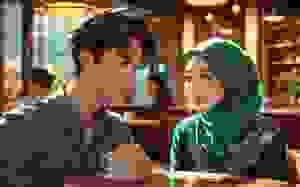Basic Structure Should M Sia Not Revert Its Position
When I was deputy registrar in the 1970s, former chief justice of Malaya SS Gill told me: “You know, Hamid, India abolished trial by jury in 1957. We adopted it in the same year.”
Now, we seem to be repeating it.
A few years ago, our Federal Court adopted the basic structure doctrine created by the Indian Supreme Court. Last year, the Indian Supreme Court changed its mind about it.
What will our Federal Court do now? By the way, in Malaysia, trial by jury was abolished in 1995.
ADSLet me tell the story from the beginning.
The court will decide what is constitutional
In 1973, the Indian Supreme Court decided the case of Kesavananda Bharati v State of Kerala, AIR 1973 SC 1461.
The court held that Article 368 of the Indian Constitution (on the amendment of the Indian Constitution) does not enable Parliament to alter the basic structure or framework of the Constitution.
The effect of that judgment is that certain provisions of the Indian Constitution form its basic structure. The court will decide which provisions form the basic structure of the Constitution on a case-by-case basis.
The court will then use the basic structure principle as the basis of its power to review and to strike down constitutional amendments enacted by Parliament, which seek to alter this basic structure of the Constitution.

In other words, the power of Parliament to amend those parts of the Constitution which, according to a judge or judges, form its basic structure, is removed by the judge or judges.
That case was decided by a slim majority of seven to six. It is said that when the case was decided, the perception by the majority bench that elected representatives could not be trusted to act responsibly was unprecedented.
Question: What if the elected representatives think the same way about judges? Are they entitled to remove the judgments of the court on a case-by-case basis to be struck down by them?
In Maneka Gandhi v Union of India 1978 AIR SC 597; (1978) 1 SCC 248 (Maneka Gandhi), the Indian Supreme Court extended the doctrine’s importance as superior to any parliamentary legislation.
It held that no Act of Parliament can be considered law if it “violates” the basic structure of the Indian Constitution.
Malaysia’s unnecessary adoption
ADSBack in Malaysia, lawyers, academicians and others applauded the judgment.
Lawyers in Malaysia, led by three successive presidents of the Bar Council, namely GTS Sidhu, Raja Aziz Addruse, and Param Cumaraswamy, as well as Gopal Sri Ram (as he then was), tried hard to influence the then Federal Court to adopt the principle.
However, their attempts failed. The Federal Court in Loh Kooi Choon v The Government of Malaysia [1977] 2 MLJ 187 rejected it.
Suffian (LP) and Wan Suleiman (FJ) wrote separate judgments giving reasons why they were not inclined to follow it.
That judgment was followed by the Federal Court in Phang Chin Hock v Public Prosecutor [1980] 1 MLJ 70.
In 1989, the case was followed by the Singapore High Court in Teo Soh Lung v Minister for Home Affairs and Ors [1989] 2 MLJ 449.
The Loh Kooi Choon case stood as the law of this country for 33 years. One would have thought that the issue regarding the basic structure of the Constitution was settled.
However, that was not to be, thanks, in particular, to one man.

The late Goapl Sri RamTowards the end of his career, Gopal was promoted from the Court of Appeal to the Federal Court. He was a member of the panel that decided Sivarasa Rasiah v Badan Peguam Malaysia & Anor. [2010] 2 MLJ 333.
Even though he was the most junior member of the panel, he delivered the judgment of the Court.
The issue in that case was whether Section 46A(1) of the Legal Profession Act 1976 was unconstitutional.
The Federal Court, through the judgment of Gopal, held that it was constitutional. I have no problem with that, but I disagree that the basic structure principle should be imported into this country because:
1. It is not at all necessary for the decision of that case. What was being challenged in that case was the validity of Section 46A(1) of the LPA on the ground that it was inconsistent with the Constitution.
No one was trying to amend any provision of the Constitution. What was the relevance of the basic structure principle?
2. The Kesavananda Bharati case was followed without analysing the case or the circumstances surrounding it.
The learned judge either brushed aside or ignored the earlier judgments of the Federal Court, which had stood for 33 years.
3. The court was usurping the function of Parliament to amend the Constitution.
Indeed, even Parliament cannot make such an amendment, because Parliament cannot bind itself from making laws inconsistent with the existing laws, provided the procedure is followed.
Otherwise, no law can be amended.
Butterfly effect
Seven years later, the Federal Court handed down the judgment in the case of Semenyih Jaya Sdn Bhd v Pentadbir Tanah Hulu Langat (2017) 3 MLJ 561.
That judgment, written by Federal Court judge Zainun Ali, relied on Gopal’s judgment in the Sivarasa case as the authority for the introduction of the basic structure principle into this country, without any question.

It also ignored or missed the cases of Phang Chin Hock and Teo Soh Lung.
On June 14 and 15, 2017, the New Straits Times published my article in two parts titled “Not For Judges to Rewrite the Constitution” and “No Judge is a Parliament.”
Then, on Jan 29, 2018, the Federal Court handed down the judgment in Indira Gandhi a/p Mutho v Pengarah Jabatan Agama Islam Perak & Ors and other appeals (2018) 1 MLJ 545.
Again, the judgment was written by Zainon. Even though the basic structure principle was not at all an issue in the case, the learned judge took the opportunity to endorse Semenyih Jaya.
As a result, the basic structure principle becomes the law of this country.
Temporary reversal
On Jan 8, 2021, the Federal Court handed down the judgment in Maria Chin Abdullah v Ketua Pengarah Imigresen & Anor] [20211 MLJ 750, [2021] 2 CLJ 579.
It was a seven-member bench chaired by Chief Justice Tengku Maimun Tuan Man. The other members were Rohana Yusuf, Nallini Pathmanathan, Abdul Rahman Sebli, Hasnah Hashim, Mary Lim, and Harmindar Singh.
By a majority judgment of 4:3, the court reversed the earlier judgment on basic structure.
In the majority were Rohana, Rahman, Hasnah, and Mary Lim, while in the minority were Tengku Maimun, Nallini, and Harmindar Singh.
The Chief Justice must have been disappointed with Lim. Anyway, Lim later changed her mind to be in the Chief Justice’s team.

Chief Justice Tengku Maimun Tuan MatSoon after the Maria Chin case was decided, there were talks that the Chief Justice was assembling another panel to reverse that judgment.
When we saw the panel chaired by Nallini, with Harmindar and Rhozariah Bujang as members, to hear Dhinesh a/l Tanaphll v Lembaga Pencegah Jenayah & Ors (2022 3 MLJ 356), we knew straight away which way the judgment was going to go.
Nallini and Harminder were in the same camp as the Chief Justice in the Maria Chin case. Rhozariah is one of the latest appointees to the Federal Court, along with Harminder. We do not expect her to go against Nallini and Harmindar.
Sure enough, we received a unanimous judgment written by Nallini reinstating the basic structure doctrine. I remember Gopal issuing a statement proclaiming that the basic structure is part of our law.
We note from the judgment that:
“[28] Prior to the hearing of this appeal and the decision, this court requested counsel to file additional submissions on the following issue, namely the constitutionality of Section 15B of the Prevention of Crime Act and whether the section violates Article 4(1) read together with Article 121(1) of the Federal Constitution.”
It is abundantly clear that the panel was selected to reverse the Maria Chin judgment, and the CJ-Nallini team has succeeded in it.
India changes its mind
Unexpectedly, on Nov 5, 2024, the Supreme Court of India, comprising Chief Justice of India DY Chandrachud, judges JB Pardiwala and Manoj Misra, handed down the judgment in Anjum Kadari v Union of India 2024 INSC 831.
The Supreme Court upheld the constitutional validity of the Uttar Pradesh Board of Madarsa Education Act, 2004.
The Supreme Court explained that a statute can only be invalidated if it violates fundamental rights under Part III of the Constitution or exceeds legislative competence.
The court highlighted that to prove a breach of secularism, it must be shown that the statute contravenes specific constitutional provisions related to secularism.

Delivering the judgment of the court, Chief Justice Chandrachud, inter alia, said: “The Constitution imposes certain limitations on the legislative powers of Parliament and the state legislatures.
“Article 13(2) provides that the state shall not make any law that takes away or abridges the rights conferred by Part III. Statutes enacted by the state legislatures must be consistent with the fundamental rights enumerated under Part III of the Constitution.
“Further, Article 246 defines the scope and limitations of the legislative competence of Parliament and state legislatures.
“A statute can be declared ultra vires on two grounds alone: (i) it is beyond the ambit of the legislative competence of the legislature; or (ii) it violates Part III or any other provision of the Constitution.
“... From the above discussion, it can be concluded that a statute can be struck down only for the violation of Part III or any other provision of the Constitution or for being without legislative competence.
“The constitutional validity of a statute cannot be challenged for the violation of the basic structure of the Constitution. The reason is that concepts such as democracy, federalism, and secularism are undefined concepts.
“Allowing courts to strike down legislation for violation of such concepts will introduce an element of uncertainty in our constitutional adjudication.
“Recently, this court has accepted that a challenge to the constitutional validity of a statute for violation of the basic structure is a technical aspect because the infraction has to be traced to the express provisions of the Constitution.
“Hence, in a challenge to the validity of a statute for violation of the principle of secularism, it must be shown that the statute violates provisions of the Constitution pertaining to secularism.”
Time to re-examine our position
I do not cite this case to urge the Federal Court to follow it blindly. Neither should we have followed the cases that introduced the basic structure doctrine blindly.
We are bound by the provisions of our Constitution. These are cases from a foreign jurisdiction, decided on the peculiar facts of the respective cases, under peculiar circumstances, according to the provisions of the law and the Constitution of the country.
My understanding of the case is that the Indian Supreme Court has now reverted to the provision of the Indian Constitution, having seen the mischief the self-invented doctrine had done in the last 50 years.
Is Malaysia going to wait another 50 years to realise the same mistake?
I submit that it is time for us to go back to the position before the adoption of the basic structure doctrine by our court. I had said from the very beginning that it was wrong for us to adopt that doctrine.
But a certain quarter in the legal fraternity, for reasons best known to them, was bent on importing it.
As lawyers, they failed to convince the then-Federal Court to adopt it. As a judge of the Federal Court, one of them found the opportunity to squeeze it in, even though there was neither justification nor necessity to rely on the doctrine to decide the case. The rest is history.
The provisions of our Constitution were drafted to say and to mean:
i) “This Constitution is the supreme law of the Federation and any law passed after Merdeka Day which is inconsistent with this Constitution shall, to the extent of the inconsistency, be void.” - Article 4(1), and
ii) “Subject to the following provisions of this Article and to Article 161E, the provisions of this Constitution may be amended by federal law.” - Article 159(1). - Mkini
ABDUL HAMID MOHAMAD is former chief justice.
The views expressed here are those of the author/contributor and do not necessarily represent the views of MMKtT.
Artikel ini hanyalah simpanan cache dari url asal penulis yang berkebarangkalian sudah terlalu lama atau sudah dibuang :
http://malaysiansmustknowthetruth.blogspot.com/2025/04/basic-structure-should-msia-not-revert.html
 PING BABAB : Raksasa Aggregator Malaysia
PING BABAB : Raksasa Aggregator Malaysia
 In other words, the power of Parliament to amend those parts of the Constitution which, according to a judge or judges, form its basic structure, is removed by the judge or judges.
In other words, the power of Parliament to amend those parts of the Constitution which, according to a judge or judges, form its basic structure, is removed by the judge or judges. The late Goapl Sri RamTowards the end of his career, Gopal was promoted from the Court of Appeal to the Federal Court. He was a member of the panel that decided Sivarasa Rasiah v Badan Peguam Malaysia & Anor. [2010] 2 MLJ 333.
The late Goapl Sri RamTowards the end of his career, Gopal was promoted from the Court of Appeal to the Federal Court. He was a member of the panel that decided Sivarasa Rasiah v Badan Peguam Malaysia & Anor. [2010] 2 MLJ 333. It also ignored or missed the cases of Phang Chin Hock and Teo Soh Lung.
It also ignored or missed the cases of Phang Chin Hock and Teo Soh Lung. Chief Justice Tengku Maimun Tuan MatSoon after the Maria Chin case was decided, there were talks that the Chief Justice was assembling another panel to reverse that judgment.
Chief Justice Tengku Maimun Tuan MatSoon after the Maria Chin case was decided, there were talks that the Chief Justice was assembling another panel to reverse that judgment. Delivering the judgment of the court, Chief Justice Chandrachud, inter alia, said: “The Constitution imposes certain limitations on the legislative powers of Parliament and the state legislatures.
Delivering the judgment of the court, Chief Justice Chandrachud, inter alia, said: “The Constitution imposes certain limitations on the legislative powers of Parliament and the state legislatures.

























